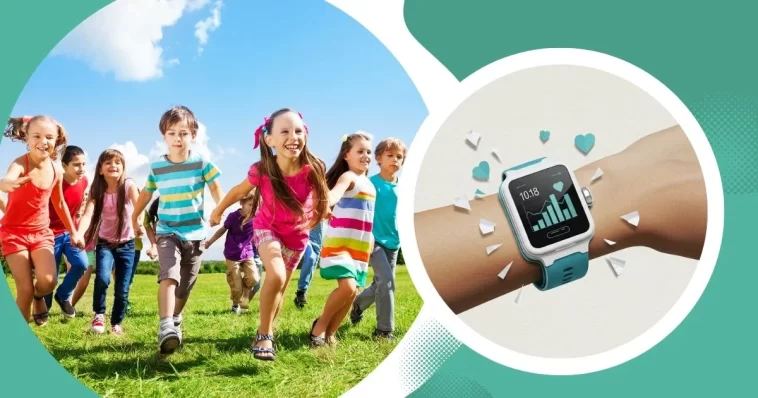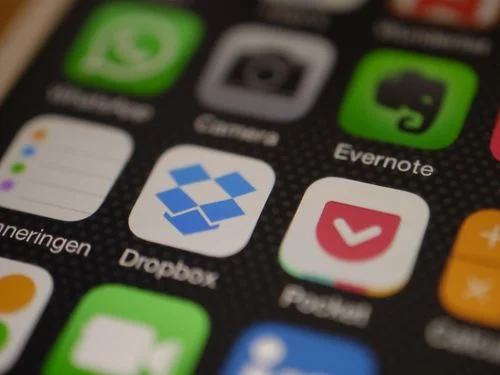In today’s digital world, keeping children physically active is more challenging than ever. The same technology that often keeps kids glued to screens also provides a solution through kids fitness apps. When selected carefully, these apps turn exercise from a chore into a fun, engaging, and rewarding adventure. With the digital landscape being vast and sometimes unregulated, parents must navigate potential privacy issues, age-inappropriate content, and confusing features to find the safest and most effective options.
This article provides a detailed guide to identifying the most reliable fitness apps for children. Key criteria for safe and effective apps are examined, along with the advantages of integrating technology with physical activity. Specific examples of apps that have gained approval from parents and experts are also highlighted.
Why Tech and Fitness Must Coexist
The Problem: Physical Inactivity in the Digital Age
The World Health Organization recommends that children and adolescents aged 5 to 17 accumulate at least 60 minutes of moderate-to-vigorous-intensity physical activity daily. Unfortunately, this benchmark is a struggle for many.
- Increased Screen Time: Digital devices for entertainment, education, and social connection have dramatically increased sedentary time. At the same time, not inherently bad, excessive screen time displaces time that would otherwise be spent moving.
- Safety Concerns and Decreased Outdoor Play: In many communities, parental anxieties about safety, traffic, or crime limit unstructured outdoor play, pushing physical activity into scheduled, adult-supervised formats.
- The Appeal of Immediate Digital Gratification: The instant reward loops and constant stimulation of games and social media can make the delayed gratification of physical exercise seem dull by comparison.
The Solution: Using Apps as a Catalyst for Movement
Trusted fitness apps counter these issues by packaging physical activity into an appealing, child-friendly format. They serve as a bridge between the digital world children love and the physical activity their bodies need.
- Gamification for Engagement: Apps use proven game mechanics, points, levels, achievements, and unlocking new content to make exercise feel like a mission or a game rather than a workout. This transforms jumping jacks into a power-up sequence and stretching into a yoga superpower.
- Accessibility and Convenience: An app lets you have an instant physical education class right in the living room, with no special equipment or travel required. This is invaluable for busy parents, during inclement weather, or in homes with limited outdoor space.
- Mental and Emotional Health Benefits: Beyond the physical benefits of building strong bones, muscles, and a healthy heart, regular movement supported by these apps boosts mental health. Exercise is a well-known mood regulator that helps reduce stress and anxiety. Apps that incorporate mindfulness and yoga often explicitly connect physical movement to emotional regulation and focus, which is particularly beneficial for improving concentration and academic performance.
The Parents’ Checklist: Six Pillars of a Trustworthy Fitness App
Before downloading any application, parents must adopt a critical mindset. A safe, effective, and trustworthy kids’ fitness app must meet several non-negotiable standards that extend far beyond the quality of its workouts.
1. Data Privacy and Security (COPPA Compliance)
This is the most crucial consideration. Apps directed at children under 13 in the United States must comply with the Children’s Online Privacy Protection Act (COPPA). Even if you live outside the US, this is the gold standard to look for.
- Minimal Data Collection: The app should explicitly state that it collects minimal personal information. Ideally, it should not require a child’s full name, email, or exact location. Accounts should often be managed via a parent’s email.
- No Unsanctioned Sharing: Look for a privacy policy that guarantees data is not sold or shared with third-party advertisers.
- Secure Parental Gates: Any links to external sites, social media, or in-app purchase options must be protected by a “Parental Gate”—a feature that requires the parent to solve a complex math problem or enter a password to prevent the child from accessing them accidentally or intentionally.
2. Age-Appropriate and Certified Content
The human body changes dramatically from a toddler to an older child to a teen. A good app understands this physiological progression and tailors its content accordingly.
- Developmentally Appropriate Movement: Workouts should emphasize fundamental movement skills—running, jumping, balancing, throwing—for younger children, transitioning to age-appropriate strength and endurance activities for older kids. Look for guidance from qualified professionals, such as certified youth fitness instructors, pediatric physical therapists, or yoga teachers.
- Injury Prevention Focus: The videos and instructions must clearly model proper form. An app is not a substitute for an in-person coach, so the exercises must be low-risk, focusing on bodyweight movements and dynamic stretching rather than heavy resistance or highly technical maneuvers.
- No Emphasis on Aesthetics or Weight Loss: A trustworthy app will promote fitness for health, energy, and fun, without focusing on body image, calorie counting, or explicit weight-loss goals, which can be detrimental to a child’s self-esteem and relationship with food and exercise.
3. Clear and Minimal Advertising
Nothing breaks trust like an app for children that is riddled with intrusive ads.
- Ad-Free or Subscription Model: The best apps are either completely ad-free or supported by a paid subscription or a one-time purchase. If a free version is offered, the ads should be non-intrusive, static, and vetted to ensure they are appropriate for the target age group.
- No Hidden In-App Purchases: The app should not pressure children to buy virtual items, new levels, or extra content. The parent must strictly control all payment processes through the protected parental gate.
4. High-Quality Video and Audio Instruction
Children are visual learners. The effectiveness of the app depends entirely on the clarity of its instructions.
- Clear Demonstrations: Videos should be high-definition and feature children or enthusiastic, child-friendly adults demonstrating the moves with energy and correct form.
- Verbal Cues and Motivation: Good audio is essential. Instructors should provide simple, encouraging verbal cues, countdowns, and enthusiastic motivation that make the child feel like they are interacting with a friendly coach.
- Fun, Engaging Themes: The best apps wrap their workouts in engaging narratives—adventures, dance parties, superhero missions, or storytelling yoga—to capture a child’s imagination.
5. Parental Overview and Control
A trustworthy app keeps the parent in the loop without micromanaging the child’s fun.
- Parent Dashboards: This feature allows parents to track their child’s activity time, view completed workouts, and set screen time limits for the app.
- Customization Options: Parents should be able to filter content by age, workout length, or activity type (e.g., cardio, yoga, strength).
- Family Syncing: Apps that allow multiple children or the whole family to participate under one account promote family bonding and mutual encouragement.
6. Minimal or Zero Equipment Requirement
A truly accessible fitness app should require little to no specialized gear, making it inclusive for people of all income levels and housing situations. Workouts should rely primarily on the child’s own bodyweight.
Trusted Kids Fitness Apps That Earned Their Stripes
While the digital world evolves constantly, a few apps and platforms have consistently met the high bar for safety and engagement, making them reliable choices for parents.
1. GoNoodle
The Focus: Movement, mindfulness, and sensory-motor development through short, highly engaging videos.
- Why Parents Trust It: It is a widely used resource in schools, making it a familiar and vetted brand. It is entirely free and supported by partnerships, meaning there are virtually no ads to worry about. The content is short, typically 3 to 5 minutes, making it perfect for brain breaks or quick energy bursts.
- The Content: GoNoodle offers a massive library of kid-friendly music videos, guided dances, simple yoga, and mindful breathing exercises. Characters lead the activities in fun, silly ways that appeal to elementary-age children. Activities range from “Indoor Recess” to “Flow,” a mindfulness series.
- SEO Relevance: Often searched for by parents looking for “free indoor recess ideas” or “movement activities for classrooms.”
2. Sworkit Kids
The Focus: Customizable, structured workouts for strength, agility, flexibility, and balance.
- Why Parents Trust It: Sworkit has a highly-regarded adult fitness app, and its kids’ version maintains the same high standards for instruction and privacy. It emphasizes health and physical literacy over competition. It offers a free tier and a premium subscription.
- The Content: The app allows kids or parents to choose the workout length (5-60 minutes) and the focus area. It features real children demonstrating the exercises, which helps with relatability and proper form. The use of randomized exercises, based on scientific training principles, keeps the workouts fresh and engaging.
- SEO Relevance: Searched for by parents looking for “structured workouts for kids” or “kid-friendly exercise video demos.”
3. Cosmic Kids Yoga
The Focus: Storytelling and imaginative play combined with yoga and mindfulness.
- Why Parents Trust It: Hosted by a single, friendly, and highly certified instructor, Jaime, the content is known for its positive, calming, and imaginative nature. While primarily distributed through YouTube, the separate app can offer a more controlled, ad-free environment.
- The Content: Jaime tells a story—often based on popular movies, fairy tales, or original adventures—and the children use yoga poses to act out the narrative. For instance, a child might become a starship, a brave wizard, or a soaring dragon, with each pose representing an action in the tale. This makes it an exceptional tool for teaching emotional regulation and focus through movement.
- SEO Relevance: Popular search terms include “kids yoga with storytelling,” “mindfulness apps for children,” and “Jaime Cosmic Kids.”
4. UNICEF Kid Power App
The Focus: Altruism, movement tracking, and social good.
- Why Parents Trust It: UNICEF’s involvement, a universally recognized charity, provides an immediate layer of trust and a positive social context. It connects a child’s physical activity to real-world impact.
- The Content: The app works with a separate Kid Power Band or can track steps on a mobile device. Kids earn “Kid Power Points” for physical activity, which translates into actual Ready-to-Use Therapeutic Food packets that UNICEF delivers to malnourished children globally. This extrinsic motivation through helping others is highly effective and builds empathy.
- SEO Relevance: Appeals to searches like “fitness trackers for kids that give back,” “charity fitness apps for children,” and “UNICEF kids activities.”
Integrating Apps Into the Family Lifestyle
An app is a tool, not a solution in itself. For digital fitness to be truly successful, it must be integrated into the family’s broader philosophy of health and movement.
1. Start with ‘We Time,’ Not ‘Screen Time.’
Avoid simply handing the child a tablet and walking away. Position the app as a shared activity, at least initially. Do a workout alongside your child. When a parent participates, the activity becomes a bonding experience, setting a powerful example of active living. Try to schedule app use for a transition time, like a “morning movement” before school or a “five-minute energy burn” right after homework, rather than letting it become a default for boredom.
2. Connect the Digital Wins to Real-World Movement
If an app provides points or virtual badges, those small achievements can be used to encourage larger, screen-free activities. For example, unlocking the ‘Super Jumper’ badge can lead to trying to jump over three cracks on the sidewalk. Reaching a 60-minute goal for the week can translate into a family bike ride over the weekend. The app functions as a launchpad for active play rather than a final destination.
3. Encourage Autonomy and Choice
One of the greatest benefits of these apps is that they give children a sense of control over their fitness journey. Within the trusted apps you selected, allow your child to choose the workout, character, or instructor. This autonomy is key to long-term motivation. A 7-year-old who chooses a ‘dance party’ workout is far more likely to stick with it than one who is forced to do a ‘strength and conditioning’ session selected by a parent.
4. Focus on the Feeling, Not the Performance
When discussing the app activity, shift the conversation away from how many points were earned or how fast they went. Instead, focus on the intrinsic rewards. Ask questions like:
- “How did you feel after you finished your yoga adventure?”
- “Did that movement help you focus on your homework?”
- “Which part of your body feels stronger now?”
- “Was that fun? What made it fun?”
This reinforces the message that movement is valuable because it makes them feel good, energized, and capable, building a positive, healthy relationship with their body for life.
Harnessing Fitness Apps to Inspire Lifelong Movement
The integration of technology into every facet of life is irreversible, and children’s fitness is no exception. By applying a critical, informed, and safety-focused approach, parents can confidently harness the power of fitness apps to combat sedentary behavior and instill a lifelong love of movement.
The goal is not to trade the playground for the tablet, but to use the tablet as a spark, a trusted, fun, and convenient tool, that ignites the desire to move. By prioritizing privacy, safety, and engagement, the right fitness app becomes an invaluable partner in raising active, healthy, and happy digital natives.




